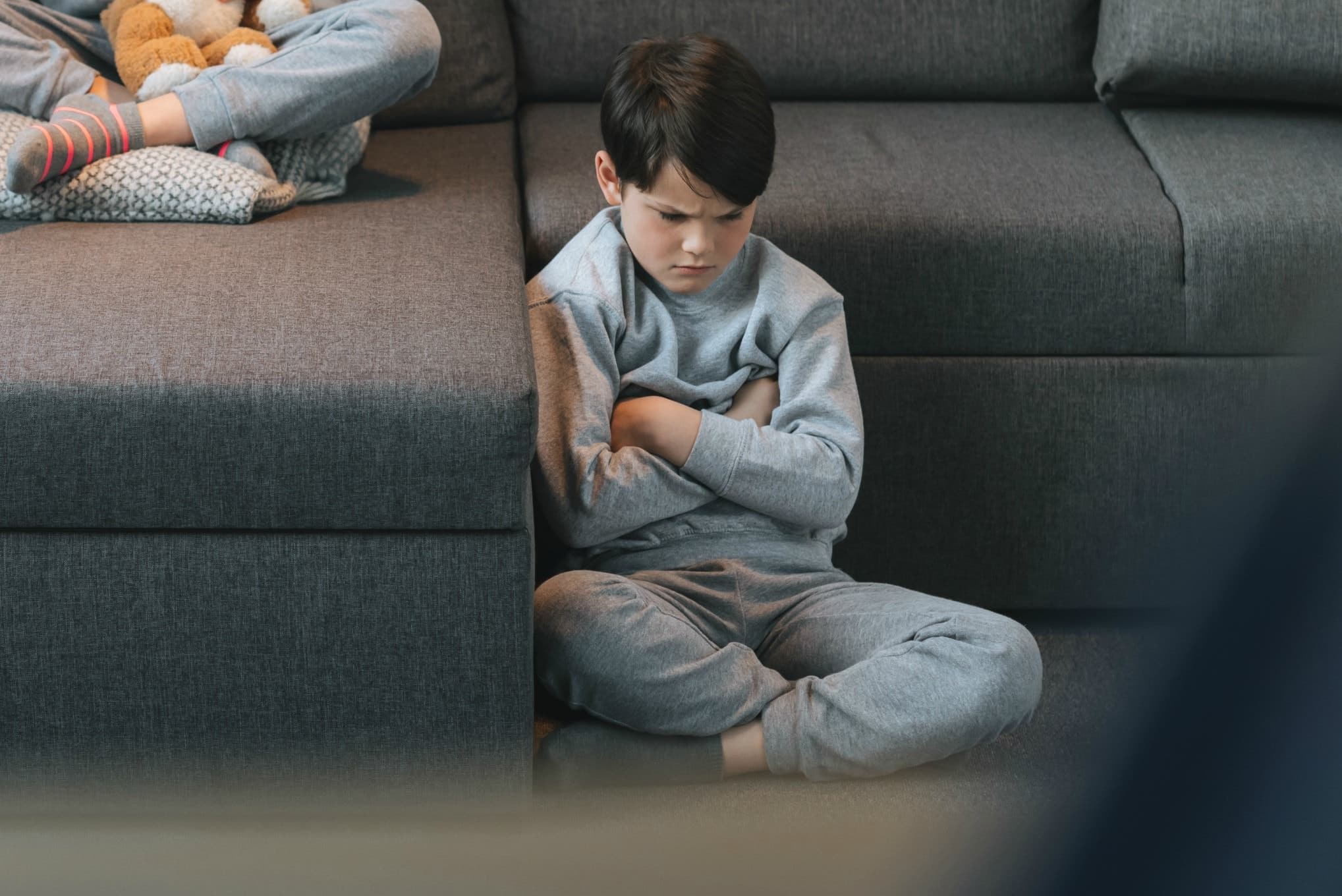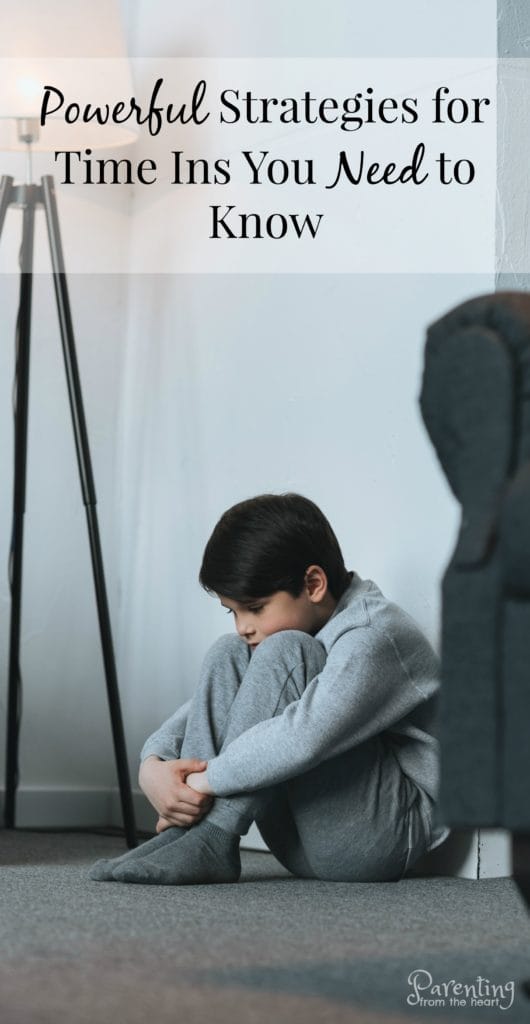Find effective strategies to calm your angry child during time-in. With countless techniques to calm strong-willed, sensitive children, there is something for every difficult or challenging emotion.
We were on week two of our three-week stay at my parents’ house and tensions were running high.
Because we live across the country, when we fly back to see my family, we stay for an extended period of time. My kids love hitting up the science centre, walking along the seawall and basking in my adult brothers’ potty humour.
There are disadvantages though. Namely, the kids are more prone to meltdowns when they’re out of their regular routine. They also struggle with having double the adults parenting them.
On this particular day, my four-year-old son was getting angrier by the moment. My daughter sat in the breakfast nook focused. As she lined up her Shopkins and LOLs along a Costco-box-turned-castle, my son took aim.

Whack!
The dog’s soggy tennis ball bowled over my daughter’s pastel figurines.
My son smirked.
“Mama!” my daughter screamed.
From where she was standing behind the kitchen counter, my mom offered help. She turned to my son and in an upbeat voice said, “I know. How about we get Sophie’s leash and head down the trail?”
“Uh!” My son grunted in response.
Laying on the couch, nursing the baby I chimed in, “You say, ‘No thank you, Nana.'”
“UH!” he looked at me now. His voice escalated. His hands were on his hips.
I sat the baby down on the distressed wood floor and went over to my big boy.
“I have an idea, let’s play Monopoly.”
Ignoring my attempt at distraction, he reached for the neon yell ball again. This time he took aim at his sister’s head. Before I had the chance to intervene, he nailed her.
I scooped him up and we headed upstairs.
This felt like the umpteenth time I had brought him for a time in.
My son’s body language was angry.Time Ins vs. Timeouts: Why I stay with my kids
I choose to stay with my children during their timeouts (also known as time in) because:
- Traditional timeouts involve the parent separating from the child when he is struggling the most. During time ins, I am with my children or, at the very least, offer to stay with them while they are having a rough time. I can help them calm down and we can problem solve together. For example, my son and I can talk about how he’s angry and how we can go outside and throw the ball together for Sophie so he can get his anger out.
- Traditional timeouts use what researchers call, ‘love withdrawal’ to motivate better behaviour while time ins use the connection between the child and caregiver to promote cooperation.
- Traditional timeouts leave a child with the impression that there are good and bad emotions. While there are more difficult emotions like anger, sadness, and frustration, these are all part of the array of feelings my children will feel their entire lives. I want to be there to teach them how to express their emotions appropriately. There is evidence that emotional suppression may interfere with successful adjustment.
And so, that day, I climbed the stairs up to my brother’s old bedroom.
I plopped my son on the soft yellow duvet dumbfounded. By now, my little guy was screaming. My heart was racing and my teeth were clenched. How I could break the cycle of him not listening and us going upstairs?
That’s when I had a lightbulb moment: How I calmed my angry child
On the bedside table, there was an essential oil diffuser. I looked at him and whispered with excitement, “Do you wanna know something I do in yoga?”
In between body shaking sobs, he nodded his head.
I handed him the gift box of oils I had gotten for Christmas.
“Choose one.”
His breathing started to steady as he selected an oil blend. He earnestly counted out each drop.
One. Two. Three. Four. Five.
I added in a little water. He pressed the button. The spiced air crept up and moved through the room.
“Now, here’s the really crazy part. I need you to pay attention and you have to promise not to laugh.”
His eyes sparkled with anticipation. The anger was almost entirely gone from his tear-stained face.
I breathed deeply, did my best to swallow my own laughter, and then let out a lion’s breath. My son erupted into a fit of giggles. I laughed too.
“Now, it’s your turn. You wanna do it with me?”
He could barely contain his laughter. Enough to give it a try. Between hysterics, we did our best lion’s breath again and again until all the stress had dissipated from my boy and he’s was back to normal. In fact, he was better than normal.
If you’re unfamiliar with the breathing technique, this Youtube video illustrates it well.
Why this Time In technique worked
During the worst meltdowns, standard breathing or relaxation techniques tend not to work. They require too much self-control. This technique worked well because it piqued my son’s interest, built anticipation, and was ridiculously silly while promoting better breathing to decrease stress.
Tools and Strategies for Time Ins or Your Calm Down Corner
The best strategies for time-ins are dependent on both the child and parent. Ours have taken trial and error, some creativity, and adaptability. Here are some wonderful tools and strategies for your time ins or to set up in a calm down corner.
- Tell social stories using your child as the protagonist.
- Use any one of these fifteen powerful phrases instead of calm down.
- Don’t lecture. Hold space for their emotions and then coach if they don’t know what’s they did wrong.
- Create a calm down kit (find a how-to for younger kids here and older kids here).
- Put lavender scented slime into a balloon to act as a stress ball.
- Encourage your child to knead calming essential oil play dough.
- Use a fidget spinner with essential oils (find out how here).
- Have ‘Thinking Puddy‘ on hand to stretch, rip or squeeze.
- Make sensory jars for time ins or your calm down corner. Water beads in sensory bottles are soothing too.
- Try any of these 7 Ways to Promote Self-Regulation in young children.
- Teach him bumble bee breathing techniques.
- Prompt her to breathe as if she’s blowing out a birthday candle. This increases focus and gives a visual she can understand.
- Try one of these 8 ways to calm an angry child anywhere.
The aftermath
Since that day at my parents’ house, I have used the lion’s breath technique sparingly. I want it to maintain its novelty and impact. In the few times, I have used it since it’s evoked the same amount of laughter and happiness.
For your family, a combination of different techniques may work the best. Please comment below and let me know what works for you!














2 comments